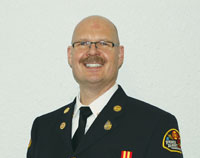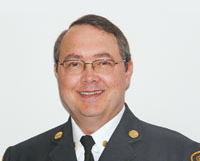
Features
Leadership
Leadership Forum: September 2011
It’s hard to believe 10 years have passed since the World Trade Center was attacked, killing about 3,000 people, including 343 of our brothers and sisters in the fire service. No one was prepared to deal with a situation of this magnitude.
September 7, 2011
By Les Karpluk Lyle Quan
It’s hard to believe 10 years have passed since the World Trade Center was attacked, killing about 3,000 people, including 343 of our brothers and sisters in the fire service. No one was prepared to deal with a situation of this magnitude. How does one begin to rebuild after such a tragic event?
In our August column, we offered tips for new fire chiefs. Whether you’re a new fire chief or you’re trying to rebuild after a tragic loss, let’s discuss the art of communicating your vision of your fire department to your staff.
Seneca, the Roman philosopher, said, “To the person who does not know where he wants to go, there is no favourable wind.” We venture to say that if you don’t know where you want to go, then neither will your staff. As a chief officer, you are steering the ship and advising everyone where to go and why; the challenge is to communicate your vision in a way that gets buy-in from your staff.
Vision is a glimpse of the future based on where the leader wants the organization to go. By sharing the vision, you are sharing your values with those you want to inspire and lead. Martin Luther King Jr. is known for his I-have-a-dream speech in which he shared a vision so real that those who heard the speech could picture King’s vision and were inspired.
Words with meaning and substance are powerful. King was able to get buy-in for his vision because he communicated it with passion – passion that was felt and observed by many. The key is that King’s listeners were ready for change and ready to push the boundaries and move toward the dream – even at the expense of going outside of their comfort zones. People were ready to buy into something greater than themselves, something that would benefit the group and not just the individuals.
Many fire-service leaders have created images of the direction in which we hope to see our organizations move. After we have created that image, we pat ourselves on the back because the image seems so attainable and worthwhile. That’s fine, but sharing the image with the rest of your staff is often overlooked.
There are many reasons to create and communicate a vision for your department, including:
- Developing staff and increasing the importance of the department in the community.
- Creating the environment for smart long-term decisions that will complement organizational planning.
- Getting staff commitment to the future of the department.
- Planting a seed for the development of a culture of fresh thinking.
If you don’t know where you want to go, you can’t prepare for what the future holds. Thinking outside of the box has never been so important and so needed by the leaders of today; creating and implementing a vision comes down to clearly communicating the need for change.
If morale issues abound in a department, the chances are slim that a fire chief can successfully communicate a vision to staff. It may sound simplistic, but poor morale leads to poor states of mind, which can close the door to long-term decision making and fresh thinking. The cycle is really a catch-22: if your staff is not open to new ideas or a new vision, then the fire chief is more than likely closing his mind to new ideas. It’s a cycle that can be broken only by those with the passion and foresight of Martin Luther King, who sensed when people were ready for change, needed change and required true leadership to make the change happen.
By sharing your vision, you are energizing your people and inspiring them to take on greater things for all the right reasons. The cycle of poor communication must be broken so departments can move forward. Staff (firefighters and fire chiefs) must be willing to share the determination, courage and hard work to take the department into the future. Leaders (with or without bars on their shoulders) must be willing to face the real challenges with courage and to communicate a vision for the department.
Let’s learn from our mistakes and build on the successes; put aside any egos and take bold steps forward. You will be better for it, your staff will be better for it and the community will reap the rewards of building a vision and implementing it.
While we’re talking about vision, it is fitting to remember our brothers and sisters who paid the ultimate price on 9-11. The losses of 9-11 are something we must never forget, as they remind us of the price many will pay while protecting our communities. At the same time, let’s make sure we thank our soldiers for serving our great country with pride. They deserve our gratitude.

|
|
 |
Les Karpluk is the fire chief of the Prince Albert Fire Department in Saskatchewan.
Lyle Quan is the fire chief of the Waterloo Fire Department in Ontario.
Both are graduates of the Lakeland College Bachelor of Business in
Emergency Services program and Dalhousie University’s Fire
Administration program.
Print this page